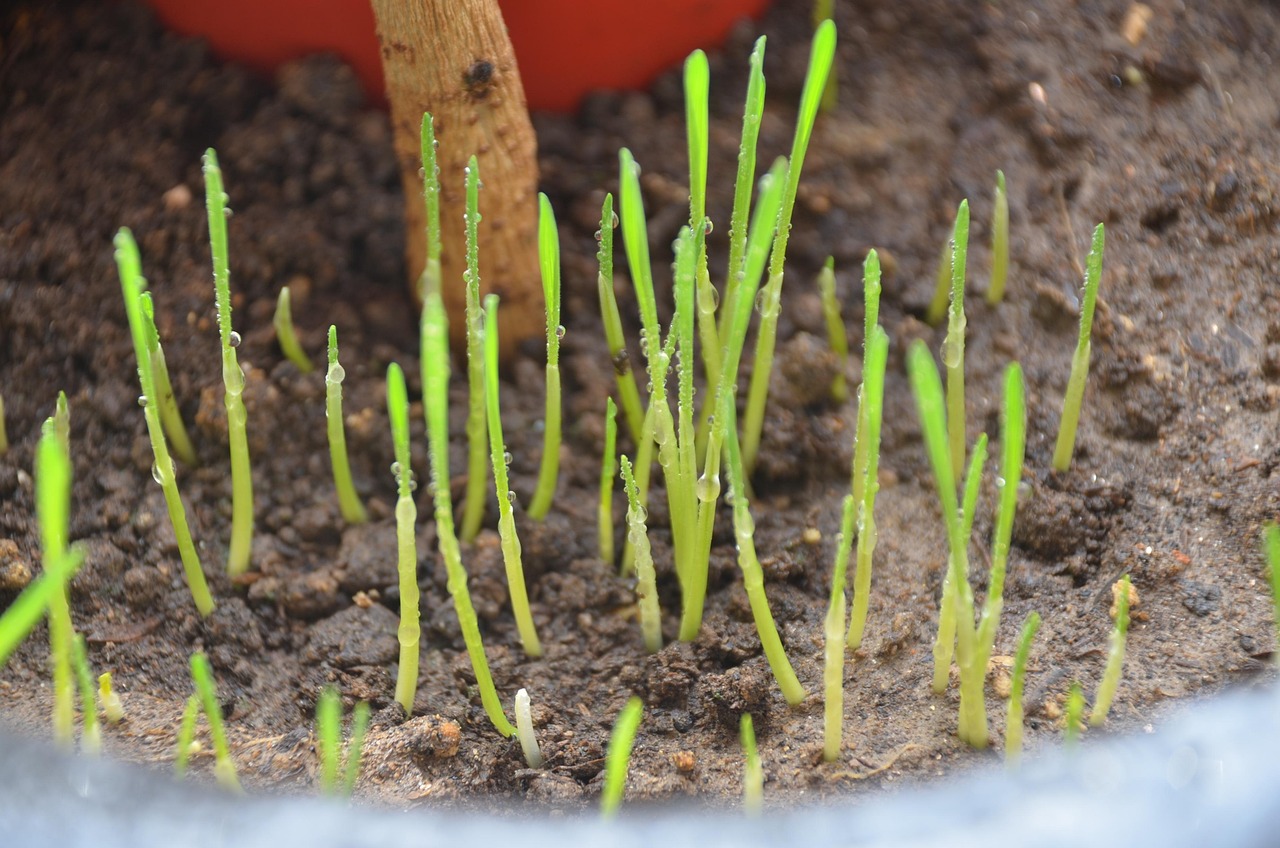The Karner Blue Butterfly faces endangerment primarily due to habitat loss caused by urban development, agricultural expansion, and changes in land use. These factors lead to the destruction of its native habitats, particularly the dry, sandy areas that support its primary food source, the wild lupine plant.
Understanding the Karner Blue Butterfly

The Karner Blue Butterfly (Lycaeides melissa samuelis) is a small butterfly known for its striking blue color and delicate wings. This species is primarily found in the northeastern United States and parts of Canada. The Karner Blue Butterfly is closely associated with specific habitats that contain wild lupine, its primary food source in both larval and adult stages. Unfortunately, this butterfly has seen a significant decline in populations over the years.
Habitat loss is one of the most critical threats to the survival of the Karner Blue Butterfly. As urban areas expand and agricultural practices intensify, natural landscapes that support this species are being destroyed. Understanding the reasons behind this habitat loss is essential for conservation efforts.
Key Factors Contributing to Habitat Loss
Several key factors contribute to the habitat loss experienced by the Karner Blue Butterfly. Each of these factors can significantly impact the delicate ecosystems where these butterflies thrive.
- Urban Development: Expansion of cities and towns leads to the conversion of natural habitats into residential and commercial areas. This process disrupts the ecosystem and diminishes available resources for the butterfly.
- Agricultural Expansion: Increased agricultural activity often results in the clearing of land that was previously home to native flora, including wild lupine. Pesticides and herbicides used in farming can also harm butterfly populations directly.
- Changes in Land Use: Shifts in land management practices, such as fire suppression, can lead to overgrowth of vegetation. This change alters the landscape, making it less suitable for the wild lupine and thus for the butterfly.
- Climate Change: Alterations in climate patterns can affect the distribution of wild lupine and other plants vital to the Karner Blue Butterfly’s survival. Changes in temperature and precipitation can disrupt their life cycles.
The Importance of Wild Lupine
Wild lupine (Lupinus perennis) plays a crucial role in the lifecycle of the Karner Blue Butterfly. This plant serves as both a food source and a habitat for the butterfly’s larvae. Without sufficient wild lupine populations, the chances of survival for the butterfly dramatically decrease.
| Aspect | Description |
|---|---|
| Food Source | Wild lupine is essential for larvae, providing necessary nutrients for growth. |
| Habitat | The presence of wild lupine indicates suitable habitat conditions for the Karner Blue Butterfly. |
| Conservation Efforts | Restoration and protection of wild lupine populations are critical for butterfly recovery initiatives. |
As urbanization and agricultural practices continue to threaten natural habitats, conservationists emphasize the need for habitat restoration. Protecting areas where wild lupine grows is vital for the survival of the Karner Blue Butterfly. Only through focused efforts can we hope to reverse the trends of endangerment faced by this beautiful species.
Impacts of Land Use Changes
Land use changes significantly impact the habitats of the Karner Blue Butterfly. Various activities, such as deforestation, urban sprawl, and agricultural intensification, contribute to the degradation of ecosystems that support this species. These changes can have both direct and indirect effects on the butterfly population.
Direct Effects of Land Use Changes
Direct impacts on the Karner Blue Butterfly’s habitat include the immediate loss of food sources and breeding grounds. When land is cleared for development or agriculture, wild lupine populations can be destroyed, leaving butterflies without necessary sustenance. Moreover, the fragmentation of their habitat can separate butterfly populations, making it more difficult for them to find mates and reproduce.
Indirect Effects of Land Use Changes
Beyond direct habitat destruction, land use changes can also lead to indirect effects. For instance, increased human activity in areas surrounding butterfly habitats can introduce pollutants and invasive species. These factors further challenge the survival of the Karner Blue Butterfly.
- Pollution: Increased runoff from agricultural fields can carry pesticides and fertilizers into nearby habitats. This runoff can negatively affect the growth of wild lupine and harm butterfly larvae.
- Invasive Species: The alteration of land often allows invasive plants to thrive. These species can outcompete native plants like wild lupine, reducing available food sources for the Karner Blue Butterfly.
- Human Disturbance: Increased foot traffic, noise pollution, and habitat encroachment can disrupt the butterfly’s natural behaviors, impacting their feeding and mating activities.
The Role of Fire Management
Fire management practices play a crucial role in maintaining suitable habitats for the Karner Blue Butterfly. Historically, natural wildfires would clear dense vegetation, allowing wild lupine to flourish. However, modern fire suppression policies have led to overgrowth in many areas.
Benefits of Controlled Burns
Controlled burns are a management tool that can mimic natural fire cycles. These burns help maintain open habitats by reducing thick brush and allowing sunlight to reach the ground. This process encourages the growth of wild lupine and other plants beneficial to the Karner Blue Butterfly.
- Habitat Restoration: Controlled burns can restore degraded habitats by removing competing vegetation.
- Increased Biodiversity: Maintaining diverse plant life supports various species, including those that are symbiotic with the Karner Blue Butterfly.
- Improved Habitat Connectivity: Regularly managed landscapes create corridors between habitats, facilitating butterfly movement and reproduction.
Conservation Efforts and Strategies
To combat habitat loss and support the recovery of the Karner Blue Butterfly, various conservation efforts are being implemented. These strategies aim not only to protect existing habitats but also to restore areas where populations have declined.
Collaborative Conservation Initiatives
Many organizations work together on conservation projects. Collaboration between government agencies, non-profit organizations, and local communities is key to successful conservation efforts. Some initiatives include:
- Habitat Restoration Projects: Efforts to reintroduce wild lupine and control invasive species are vital for restoring butterfly populations.
- Public Education Programs: Educating communities about the importance of the Karner Blue Butterfly and its habitat can foster support for conservation efforts.
- Research and Monitoring: Ongoing research helps track butterfly populations and habitat conditions, informing management decisions.
The combined actions of these initiatives can create a more supportive environment for the Karner Blue Butterfly, ultimately aiding in its recovery from endangerment.
Community Involvement in Conservation

Community involvement plays a critical role in the conservation of the Karner Blue Butterfly. Engaging local residents and stakeholders not only raises awareness but also fosters a sense of stewardship for the environment. When communities are actively involved, they can contribute significantly to the protection and restoration of butterfly habitats.

Volunteer Programs
Many conservation organizations offer volunteer programs that allow community members to participate in habitat restoration and monitoring efforts. These programs provide hands-on experiences that educate volunteers about local ecosystems and the specific needs of the Karner Blue Butterfly.
- Planting Wild Lupine: Volunteers can help plant wild lupine in suitable locations, contributing directly to habitat restoration efforts.
- Monitoring Butterfly Populations: Training community members to monitor butterfly populations can aid researchers in assessing species status and habitat conditions.
- Invasive Species Removal: Community-led initiatives to remove invasive plants can help restore native habitats and protect food sources for the butterfly.
Educational Workshops and Events
Organizing educational workshops and events is essential for raising awareness about the Karner Blue Butterfly and its habitat. These events can provide valuable information about the species’ ecology, the impacts of habitat loss, and ways to contribute to conservation efforts.
- Nature Walks: Guided nature walks can educate participants about local flora and fauna, highlighting the importance of preserving butterfly habitats.
- School Programs: Collaborating with local schools to integrate butterfly conservation into science curricula can inspire the next generation of environmental stewards.
- Community Forums: Hosting forums where community members can discuss conservation challenges and solutions encourages collective problem-solving.
The Role of Legislation in Conservation
Legislation plays a vital role in protecting endangered species like the Karner Blue Butterfly. Various laws and regulations aim to conserve habitats and promote sustainable land use practices. Understanding these legal frameworks is crucial for effective conservation efforts.
Endangered Species Act
The Endangered Species Act (ESA) is a key piece of legislation that provides a framework for protecting endangered species and their habitats. Under this act, the Karner Blue Butterfly is designated as an endangered species, which helps secure protections for its habitat.
- Habitat Protection: The ESA mandates that critical habitats for the Karner Blue Butterfly must be identified and preserved, preventing activities that could further harm these areas.
- Recovery Plans: The ESA requires the development of recovery plans that outline strategies for improving the butterfly’s population and habitat conditions.
- Funding Opportunities: The act can facilitate funding for conservation projects aimed at restoring butterfly habitats and supporting research initiatives.
Local Zoning Laws and Regulations
In addition to federal protections, local zoning laws can influence land use practices that impact the Karner Blue Butterfly. These laws determine how land can be developed or used within a community, affecting habitat preservation efforts.
- Conservation Zoning: Implementing conservation zoning can restrict development in areas critical for butterfly populations, thus maintaining essential habitats.
- Sustainable Land Use Practices: Encouraging sustainable agricultural practices through local regulations can reduce habitat degradation caused by farming activities.
- Public Land Management: Effective management of public lands can ensure that areas critical to the Karner Blue Butterfly are preserved and properly maintained.
Research and Monitoring Initiatives
Ongoing research and monitoring are crucial for understanding the dynamics of Karner Blue Butterfly populations and their habitats. Scientific studies provide insights into the factors affecting their survival and inform conservation strategies.
Population Studies
Regular population studies help track the health of the Karner Blue Butterfly. Researchers use various methods to assess population size, distribution, and trends over time. These studies are essential for evaluating the effectiveness of conservation efforts.
- Field Surveys: Conducting field surveys enables researchers to gather data on butterfly populations in different habitats.
- Genetic Studies: Analyzing genetic diversity within populations can provide insights into their resilience and adaptive capacity.
- Behavioral Studies: Understanding the behaviors of Karner Blue Butterflies, such as mating and feeding patterns, helps inform habitat management practices.
Habitat Assessments
Alongside population studies, habitat assessments evaluate the conditions necessary for the survival of the Karner Blue Butterfly. These assessments consider factors such as vegetation composition, soil quality, and availability of wild lupine.
This comprehensive approach ensures that conservation strategies are based on sound scientific data, ultimately enhancing the effectiveness of efforts aimed at protecting this endangered species.
Advancements in Conservation Technology

As conservation efforts progress, advancements in technology are playing a pivotal role in enhancing the understanding and protection of the Karner Blue Butterfly. New tools and techniques are being developed that facilitate more effective monitoring, habitat assessment, and public engagement.
Remote Sensing and GIS
Remote sensing technology and Geographic Information Systems (GIS) have revolutionized the way habitats are analyzed. These tools allow researchers to map and monitor changes in land use and habitat quality over time.
- Mapping Habitat Changes: Using satellite imagery, researchers can track habitat changes, identifying areas of habitat loss or degradation quickly.
- Habitat Suitability Modeling: GIS tools can help model suitable habitats for the Karner Blue Butterfly based on environmental variables, guiding conservation efforts.
- Data Visualization: Advanced mapping techniques can visually represent data, making it easier for stakeholders to understand the impacts of land use changes.
Citizen Science Initiatives
Citizen science initiatives are becoming increasingly popular in conservation efforts. Engaging the public in scientific research not only enhances data collection but also raises awareness of the Karner Blue Butterfly’s plight.
- Butterfly Counting Programs: Local residents can participate in butterfly counting programs, contributing valuable data on population trends.
- Monitoring Wild Lupine Growth: Citizen scientists can help monitor the health and spread of wild lupine populations in their areas, aiding restoration efforts.
- Education and Outreach: Citizen science initiatives often include educational components, informing participants about the importance of biodiversity and habitat conservation.
The Importance of Biodiversity in Ecosystems
The Karner Blue Butterfly is not only an important species in its own right but also serves as an indicator of overall ecosystem health. Biodiversity plays a crucial role in maintaining ecosystem stability and resilience.
Healthy ecosystems with diverse plant and animal life are better equipped to withstand environmental changes and disturbances. The loss of a single species can have cascading effects on the entire ecosystem. Thus, efforts to protect the Karner Blue Butterfly also contribute to the preservation of broader ecological communities.
Final Thoughts
The endangerment of the Karner Blue Butterfly is a multifaceted issue rooted in habitat loss due to urbanization, agricultural practices, and land use changes. Understanding these challenges is essential for developing effective conservation strategies. Collaborative efforts among government agencies, non-profit organizations, and local communities are vital for habitat restoration and protection.
Equally important is the role of research and technology in informing conservation practices. With advancements in remote sensing, GIS, and citizen science initiatives, we are better equipped to monitor butterfly populations and manage their habitats effectively. The integration of these tools into conservation strategies will enhance our ability to support not only the Karner Blue Butterfly but also the diversity of ecosystems it represents.
Ultimately, the future of the Karner Blue Butterfly hinges on our collective action to safeguard its habitats and promote biodiversity. Through continued commitment to conservation efforts, we can hope to see this beautiful species flourish once again.
